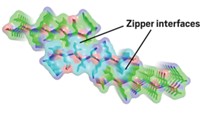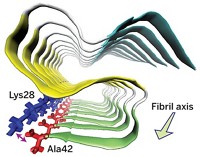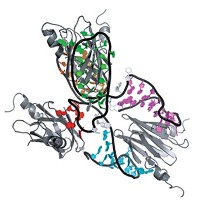Advertisement
Grab your lab coat. Let's get started
Welcome!
Welcome!
Create an account below to get 6 C&EN articles per month, receive newsletters and more - all free.
It seems this is your first time logging in online. Please enter the following information to continue.
As an ACS member you automatically get access to this site. All we need is few more details to create your reading experience.
Not you? Sign in with a different account.
Not you? Sign in with a different account.
ERROR 1
ERROR 1
ERROR 2
ERROR 2
ERROR 2
ERROR 2
ERROR 2
Password and Confirm password must match.
If you have an ACS member number, please enter it here so we can link this account to your membership. (optional)
ERROR 2
ACS values your privacy. By submitting your information, you are gaining access to C&EN and subscribing to our weekly newsletter. We use the information you provide to make your reading experience better, and we will never sell your data to third party members.
Physical Chemistry
Oligoproline Helix Analyzed In Detail
Crystallography: Researchers get better view of third-most-common protein secondary structure
by Stu Borman
November 14, 2014
| A version of this story appeared in
Volume 92, Issue 46
Oligoprolines, short peptides made up only of the amino acid proline, form polyproline II (PPII) helices, the third-most-common peptide and protein secondary structure after α-helices and β-sheets. But no one has been able to structurally analyze PPII helices in detail because oligoprolines are difficult to crystallize.
Now, Helma Wennemers and coworkers at ETH Zurich have crystallized a modified oligoproline and obtained the first high-resolution crystal structure of an oligoproline PPII helix (J. Am. Chem. Soc. 2014, DOI: 10.1021/ja507405j). The oligoproline was modified with an N-terminal p-bromobenzoyl group.
“We had sheer luck, as is so often the case in crystallization, combined with the right touch by my student Patrick Wilhelm,” Wennemers says.
In addition to the key structural role they play in proteins such as collagen, oligoprolines have been used as molecular spacers and scaffolds for applications such as targeting tumors, forming nanoparticles, assembling supramolecular structures, and inhibiting protein-protein interactions. Dimensional and conformational information obtained from the new structure could help researchers design oligoprolines for specific applications.
In addition, the structure helps resolve long-standing controversies about the functional role of amide groups and water molecules in PPII helicity. The study revealed that neighboring amide groups in the helix interact and likely contribute to helix stability, whereas water is not present inside the crystal and is therefore not necessary for helicity.
Ron Raines of the University of Wisconsin, Madison, comments that the work is “a landmark advance in structural chemistry, providing the critical first look at the parent of the ubiquitous PPII structural motif in proteins.” The study’s accurate determination of the distance between prolines in the structure “will enable numerous studies in which oligoprolines are employed as molecular rulers,” Raines says.





Join the conversation
Contact the reporter
Submit a Letter to the Editor for publication
Engage with us on Twitter